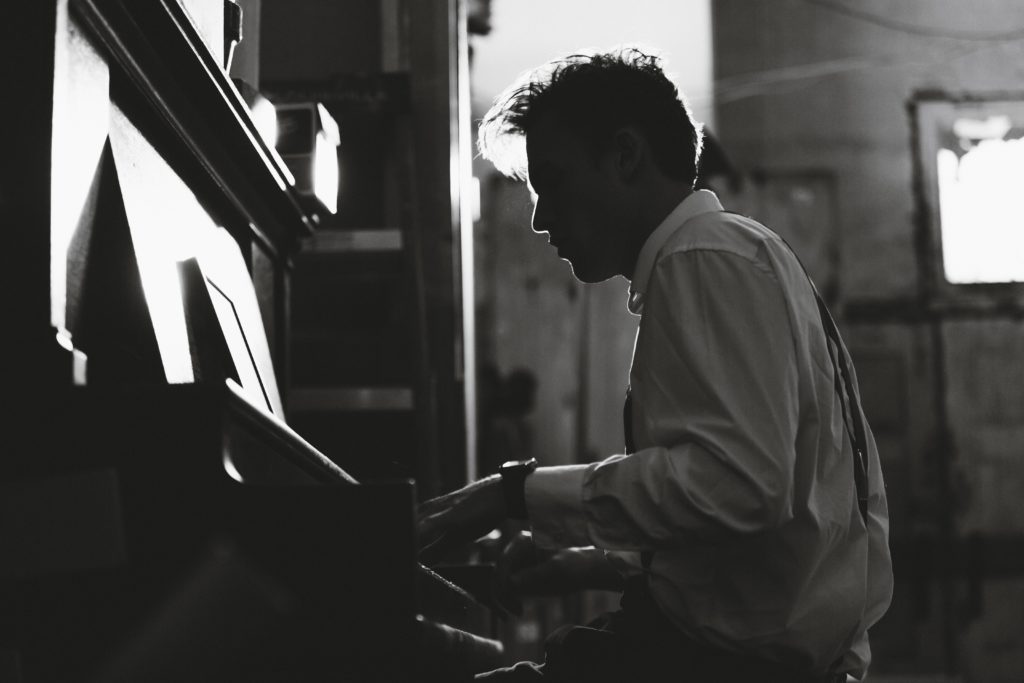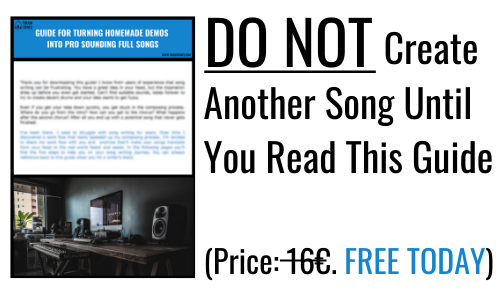Arrangement – I Overlooked This Part of Composing for Years
What is it that keeps a listener interested from the very first sound to the last chord? Without it the song doesn’t even exist. However, it is one of the things, you and I tend to overlook while getting stuck on it more often than not. Understating it can really cause you problems and headache with song writing. You guessed it, it’s the arrangement. Arranging is an incredibly important part of songwriting.
Arrangement
I know – just like me – you want your music to be somehow exceptional. You want to do something different and maybe you don’t want to be reckoned as mainstream. When it comes to the arrangement, you don’t need to invent the wheel again from the scratch.
Stick with a certain pattern
I used to think for a long time that my songs needed some kind of a weird and unique arrangement so that they would stand out from the crowd. It took me a while to figure out that’s not the case. In fact, listeners are just left wondering what’s happening. This is a common problem faced by many starting bands and singer-songwriters.
Sure, it’s good to come up with something different, but stick with a certain pattern. Take a listen to your favourite composers, bands or artists and analyze what they’re doing. They follow patterns of their own as well.

Put an effort into arrangement
Obviously you want to create songs that are interesting and stand the test of multiple listenings. People are getting bored more and more easily and quickly, since there are so many options available. Music today has to be engaging and fascinating without any dull moments if it’s going to survive.
This is why you have to put an effort into your arrangement. Don’t settle on the first thing that pops into your head. Experiment what combination works the best. Is the chosen tempo and key the best possible ones for the song? Just like in movies, you want an interesting beginning, peaks, valleys and something surprising (yet not too extreme). Don’t give everything away in the intro and always save the best stuff to the end.
Here are a few examples what you could do to keep things interesting with the arrangement:
Your songs instrumentation consists of drums, guitars, bass, vocals, some virtual instruments like synths and percussion loops. You have composed an intro, two verses, two choruses, a breakdown and a doubled chorus in the end.
Beginning
You want to start with a strong introduction so you have the whole band – drums, bass, guitars, lead synth and synth pad playing. The intro is eight bars long and then you go into the first verse. Leave out the other guitar and the synth altogether. Then in the middle of the verse add synth pad to the mix. Just before the first chorus, cut everything out except vocals and synth pad.
First Chorus & Second Verse
When the chorus starts, bring in the whole band just like in the intro, but to lift the energy a little bit, add a tambourine loop to the mix. As you go to the second verse, drop out the tambourine but let the synth pad and both guitars continue playing. Make the other guitar play something different than the other, for example a simple melody. Halfway through the second verse add vocal harmonies to bring something fresh and new to the table.
Second Chorus
The second chorus kicks off and you need something more to make it bigger and exciting. Keep the vocal harmonies in the chorus and add a new synth as well. It doesn’t have to be anything earth shattering, just a little boost of energy.
Breakdown
In the breakdown you drop everything down, just vocals and synth pad alone. You could have a new peaceful synth lead there as well. Bring in a grooving percussive element halfway through the breakdown. This could be filtered if needed. Before the last chorus, you could add an extra bar to build tension and let the breakdown mood linger just a bit longer.
Final Chorus & Outro
Here is your opportunity to make something unexpected happen. As your final chorus begins, the listeners are expecting the same chorus as before. What you could do, is to use a false chorus, at least in the first bar or two. Keep the vocals and one of the guitars playing alone before bringing the whole instrumentation in with guns blazing.
Now you can finally give everything you’ve got – all tracks in. Consider changing the drum beat or at least variating it a bit. Change from half time to double time can bring a massive change to the final chorus. Towards the end bring in some ad libs to the mix. These could be filtered vocal parts from verses or break down.
Spice It Up
Finally, you could add delay or some other effect tricks to keep things interesting throughout the song. Transition effects are also a great way to add final touches to your song. By transition effects I mean reverse crashes, toms, guitar / synths swells etc.
Summary
This is just one example what you can do with the arrangement. As you can see, you don’t want to be playing all your tracks all the time. This way you can avoid your song sounding like a loop. Adding different sounds, fills and effects here and there keeps the listener glued to their stereos (or headphones).
What I want you to do is to take time and analyze the songs you like. Grab a pen and paper or your laptop and take notes what is happening. What is the structure of the song? Are all of the instruments playing all the time? What unexpected and surprising can you find? This way you’ll learn what can be done and then implement the strategies to your own music.
To gain more tools to your songwriting box, download my completely free guide 5 Steps to Create Music Faster.
Read also: More Powerful Chorus with Arrangement

6 thoughts on “Arrangement – I Overlooked This Part of Composing for Years”